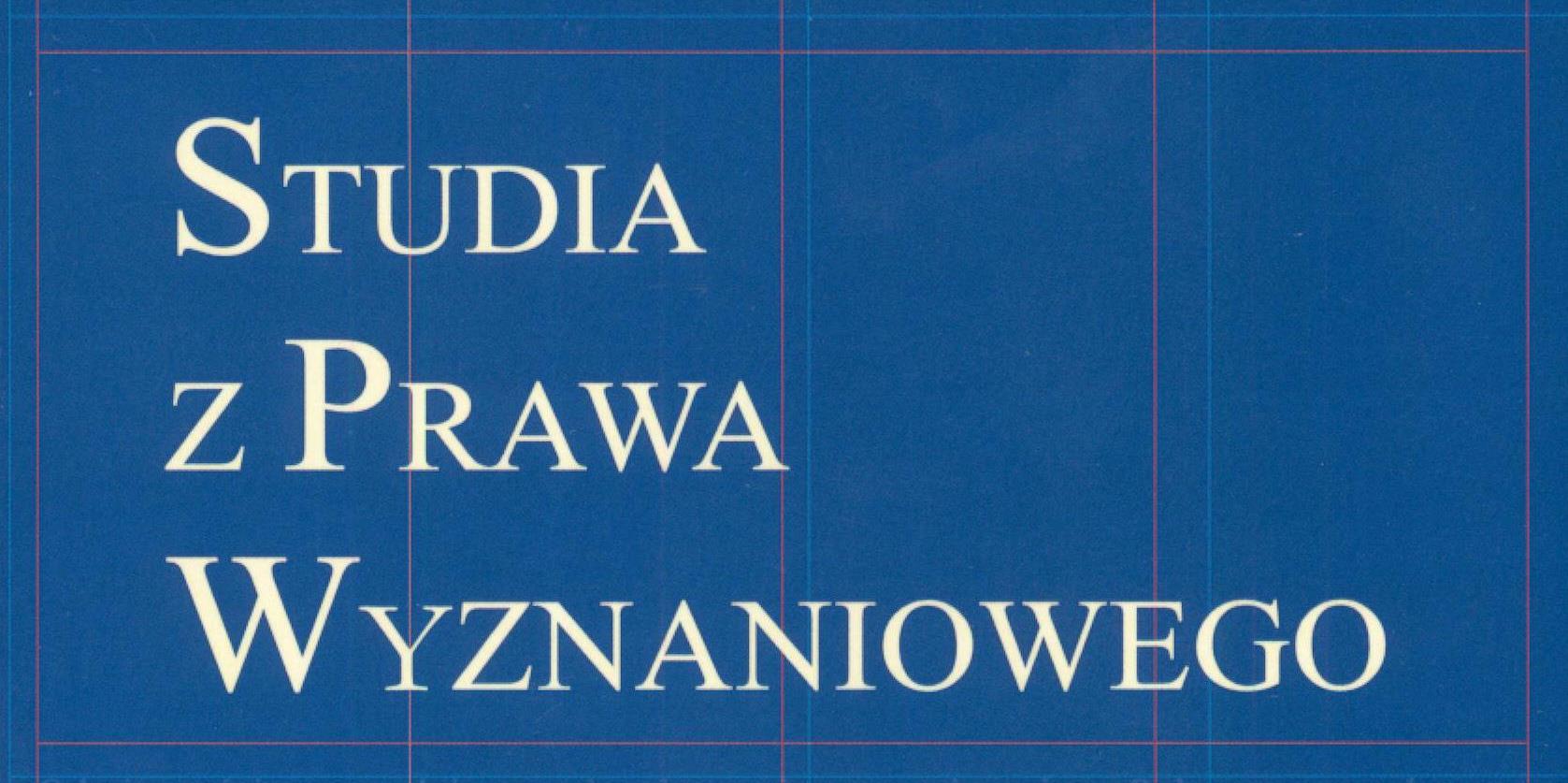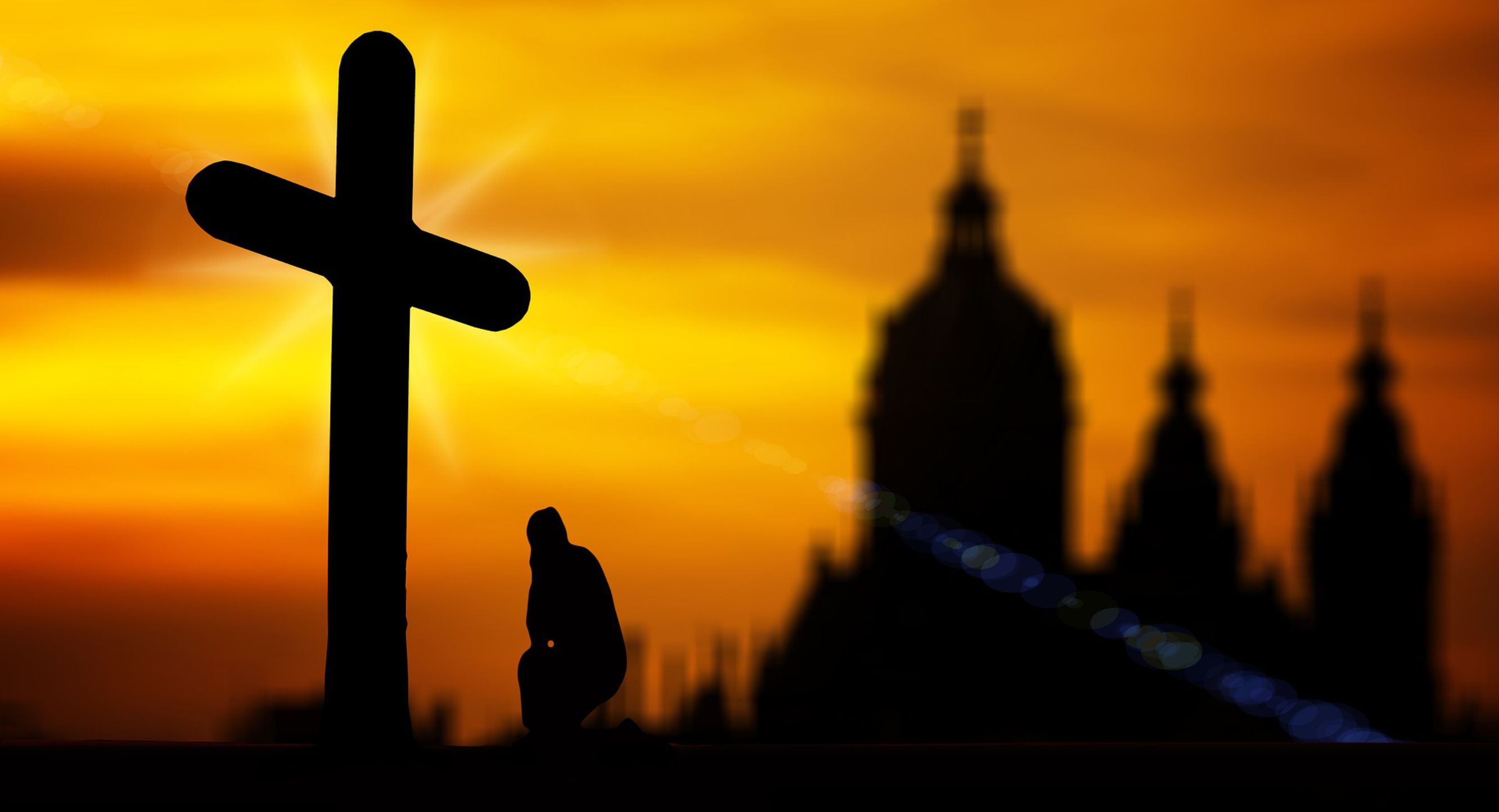Sacred art and copyright: Some remarks on the rules of using copyrighted sacred works and works exhibited in sacral space
Abstract
The aim of the article is to investigate whether the existing findings in the field of copyright law, which may be applicable in cases involving the use of works of sacred art, remain up-to-date in the context of the dynamic development of technology and changing conditions for using creative works. So far, the research on the application of copyright law to religious activity has mainly focused on the use of works in the “analogue era”. However, part of religious activity has moved to the digital environment. Since it is necessary to adapt the established ways of using works of sacred art, the topic is now worth revisiting. The paper first deals with the issue of the so-called freedom of panorama, relating to the distribution of creative works exhibited permanently in public places. The subsequent part of the study discusses the problem of using works located inside sacred buildings or performed there. The indicated issues are particularly important from the point of view of conducting religious activity on-line. Therefore, it seems reasonable to consider: a) in relation to panorama law, changing the approach to the premise of the location of a work (i.e., the notion of external space should be broadly conceived as public space – a place accessible to the public); possibly analogously to the legal solutions of 1926, accepting the use of works inside a temple as part of fair public use; b) in relation to panorama law, understanding of the notion of staging in a broad manner and consequently accepting that works displayed on a permanent basis may also be covered by panorama law; c) introducing the category of a “religious event” and assuming that the use of works during such events could entitle their creators to be remunerated (contrary to what is the case with “religious ceremonies”).
Keywords:
sacred art, copyright, digital environment, fair use, freedom of panoramaReferences
Barta, Janusz, Ryszard Markiewicz. 2016. Prawo autorskie. Warszawa: Wolters Kluwer Polska.
Błeszyńska, Katarzyna. 2020. „Dostęp do kultury w zakresie prawa panoramy jako podstawa ograniczenia praw autorskich”. Business Law Journal 73/6: 32–38. DOI: 10.33226/0137-5490.2020.6.5 (Crossref)
Chwalba, Jakub. 2021. „Komentarz do art. 32”. W: Ustawy autorskie. Komentarze. Tom I. Prawo autorskie i prawa pokrewne, Ochrona baz danych, Zbiorowe zarządzanie prawami autorskimi i prawami pokrewnymi, red. Ryszard Markiewicz. Warszawa: Wolters Kluwer Polska.
Geiger, Christophe, Franciska Schönherr, Irini Stamatoudi, Paul Torremans, Stavroula Karapapa. 2021. „The Information Society Directive”. W: EU Copyright Law: A Commentary, red. Irini Stamatoudi, Paul Torremans. Edward Elgar Publishing. DOI: 10.4337/9781786437808.00021. (Crossref)
Gienas, Krzysztof. 2021. „Komentarz do art. 33”. W: Ustawa o prawie autorskim i prawach pokrewnych, wyd. 4, red. Ewa Ferenc-Szydełko. Warszawa: C.H. Beck.
Gray, Earl, Raymond Scott. 2015. „Blowing the whistle on copyright in public sculptures”. Journal of Intellectual Property Law & Practice 10/1: 10–11. DOI 10.1093/jiplp/jpu194. (Crossref)
Iljadica, Marta. 2017. „Copyright and right to the city’. Northern Ireland Legal Quarterly 68/1: 59–78. (Crossref)
Inguanez, Daniel. 2017. „Considerations on the modernization of EU copyright: where is the user?” Journal of Intellectual Property Law & Practice 12/8: 660–668. DOI 10.1093/jiplp/jpx069. (Crossref)
Machała, Wojciech. 2019. „Komentarz do art. 50”. W: Prawo autorskie i prawa pokrewne. Komentarz, red. Wojciech Machała, Rafał Sarbiński. Warszawa: Wolters Kluwer Polska.
Marcinkowska, Joanna. 2021. „Komentarz do art. 31”. W: Ustawy autorskie. Komentarze. Tom I. Prawo autorskie i prawa pokrewne, Ochrona baz danych, Zbiorowe zarządzanie prawami autorskimi i prawami pokrewnymi, red. Ryszard Markiewicz. Warszawa: Wolters Kluwer Polska.
Newell, Bryce Clayton. 2011. „Freedom of Panorama: a Comparative Look at International Restrictions on Public Photography”. Creighton Law Review 44: 405–427.
Niżankowska-Horodecka, Anna-Maria. 2021. „Komentarz do art. 33”. W: Ustawy autorskie. Komentarze. Tom I. Prawo autorskie i prawa pokrewne, Ochrona baz danych, Zbiorowe zarządzanie prawami autorskimi i prawami pokrewnymi, red. Ryszard Markiewicz. Warszawa: Wolters Kluwer Polska.
Nowicka, Aurelia. 2021. „Komentarz do art. 6”. W: Ustawy autorskie. Komentarze. Tom I. Prawo autorskie i prawa pokrewne, Ochrona baz danych, Zbiorowe zarządzanie prawami autorskimi i prawami pokrewnymi, red. Ryszard Markiewicz. Warszawa: Wolters Kluwer Polska.
Nowińska, Ewa. 2021a. „Komentarz do art. 26”. W: Ustawy autorskie. Komentarze. Tom I. Prawo autorskie i prawa pokrewne, Ochrona baz danych, Zbiorowe zarządzanie prawami autorskimi i prawami pokrewnymi, red. Ryszard Markiewicz. Warszawa: Wolters Kluwer Polska.
Nowińska, Ewa. 2021b. „Komentarz do art. 261”. W: Ustawy autorskie. Komentarze. Tom I. Prawo autorskie i prawa pokrewne, Ochrona baz danych, Zbiorowe zarządzanie prawami autorskimi i prawami pokrewnymi, red. Ryszard Markiewicz. Warszawa: Wolters Kluwer Polska.
Pacek, Grzegorz. 2019a. „Komentarz do art. 31”. W: Ustawa o prawie autorskim i prawach pokrewnych. Komentarz, red. Arkadiusz Michalak. Warszawa: C.H. Beck.
Pacek, Grzegorz. 2019b. „Komentarz do art. 33”. W: Ustawa o prawie autorskim i prawach pokrewnych. Komentarz, red. Arkadiusz Michalak. Warszawa: C.H. Beck.
Padlewska, Julia. 2017. „Wolność panoramy w perspektywie porównawczej – Polska, Niemcy i Francja”. Zeszyty Naukowe Uniwersytetu Jagiellońskiego. Prace z Prawa Własności Intelektualnej 2: 29–64.
Rosati, Eleonora. 2017. „Non-Commercial Quotation and Freedom of Panorama.Useful and Lawful?” Journal of Intellectual Property, Information Technology and E-Commerce Law 8: 311–321.
Sadowski, Piotr. 2004. „Dozwolony użytek publiczny z art. 31 prawa autorskiego”. Przegląd Ustawodawstwa Gospodarczego 2: 16–26.
Stanisławska-Kloc, Sybilla. 2015a. „Komentarz do art. 31”. W: Prawo autorskie i prawa pokrewne. Komentarz, red. Damian Flisak. Warszawa: Wolters Kluwer Polska.
Stanisławska-Kloc, Sybilla. 2015b. „Komentarz do art. 33”. W: Prawo autorskie i prawa pokrewne. Komentarz, red. Damian Flisak. Warszawa: Wolters Kluwer Polska.
Targosz, Tomasz. 2015. „Komentarz do art. 50”. W: Prawo autorskie i prawa pokrewne. Komentarz, red. Damian Flisak. Warszawa: Wolters Kluwer Polska.
Ter Hazeborg, Enno. 2021. Die Panoramafreiheit im digitalen Zeitalter: Eine europäische Diskussion. Baden-Baden: Nomos. (Crossref)
Traple, Elżbieta. 2011a. „Komentarz do art. 31”. W: Prawo autorskie i prawa pokrewne. Komentarz, red. Janusz Barta, Ryszard Markiewicz. Warszawa: Wolters Kluwer Polska.
Traple, Elżbieta. 2011b. „Komentarz do art. 33”. W: Prawo autorskie i prawa pokrewne. Komentarz, red. Janusz Barta, Ryszard Markiewicz. Warszawa: Wolters Kluwer Polska.
Traple, Elżbieta. 2011c. „Komentarz do art. 50”. W: Prawo autorskie i prawa pokrewne. Komentarz, red. Janusz Barta, Ryszard Markiewicz. Warszawa: Wolters Kluwer Polska.
Tylec, Grzegorz. 2016. „Prawo autorskie w działalności religijnej”. Studia z Prawa Wyznaniowego 19: 86–106. DOI 10.31743/spw.126. (Crossref)
Urbański, Andrzej. 2019a. „Komentarz do art. 31”. W: Prawo autorskie i prawa pokrewne. Komentarz, red. Wojciech Machała, Rafał Sarbiński. Warszawa: Wolters Kluwer Polska.
Urbański, Andrzej. 2019b. „Komentarz do art. 33”. W: Prawo autorskie i prawa pokrewne. Komentarz, Wojciech Machała, Rafał Sarbiński. Warszawa: Wolters Kluwer Polska.
University of Bialystok
Dr, Katedra Prawa Cywilnego i Handlowego, Wydział Prawa, Uniwersytet w Białymstoku, ul. Mickiewicza 1, 15–213 Białystok
https://orcid.org/0000-0002-5378-2363License

This work is licensed under a Creative Commons Attribution 4.0 International License.
- According to the Act of 4 February 1994 on copyright and related rights, the author of a publication transfers to the publisher the proprietary copyright of his or her work in all fields of exploitation known on the date of concluding an agreement with the publisher.
- Texts submitted for publication in Studia z Prawa Wyznaniowegocannot infringe the copyright of third parties. The author declares the originality of his or her publication when completing a declaration and signing a publishing agreement.
- Authors are permitted to post the publisher's version of their work online (e.g. in institutional repositories, academia.edu, researchgate.net or on their website) after its initial publication in this journal.
- With the consent of the editors, texts published in Studia z Prawa Wyznaniowego can be republished in other publications (provided that their original place of publication is acknowledged).
- This is an open access journal which means that all content is freely available without charge to the user or his/her institution. Users are allowed to read, download, copy, distribute, print, search, or link to the full texts of the articles, or use them for any other lawful purpose, without asking prior permission from the publisher or the author.











